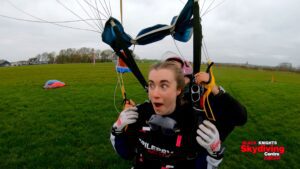- Epilepsy is a serious neurological condition that can affect anyone at any age and from any walk of life. There are 630,000 people with epilepsy living in the UK, around one in every 100 people. Every day, 80 people are diagnosed.
- One in every four people newly diagnosed with epilepsy is over the age of 65. One in 67 older people have epilepsy and this number is likely to keep increasing.
- One in every 220 children under 18 will have a diagnosis of epilepsy. That is an average of two children with epilepsy in every primary school and nine in every secondary school.
- There are around 60 different types of seizure and someone may have more than one type. Seizures vary depending on where in the brain they are happening. Some people remain aware throughout, while others can lose consciousness.
- The consequences of an epilepsy diagnosis are severe and wide-reaching. Diagnosis can result in the loss of education, independence, income and employment.
- The disability employment gap in the UK affects people with epilepsy acutely. Two thirds (66%) of working-age people with epilepsy are unemployed, far more than for those with most other disabilities. Disabled workers are paid on average 19.6% less than their non-disabled peers. Our employment campaign page explores this topic.
- Every year in the UK, around 1,000 people die from causes related to epilepsy. Half of these 1,000 deaths are from sudden unexpected death in epilepsy (SUDEP), when someone with epilepsy dies and no obvious cause of death can be found.
- Deaths in people with epilepsy increased by 70% between 2001 and 2014. Deaths occur on average eight years earlier than those for the rest of the population. The 2018 report by Public Health England also found that people with epilepsy are three times more likely to die from their condition if they live in a deprived area. With the right treatment, over 60% of people with epilepsy could stop having seizures altogether. But neurology is known to be severely underfunded compared to other UK health services.
Epilepsy facts
Terminology
Feedback from people with epilepsy suggests the following as more positive or preferred ways of referring to the condition.
- ‘Condition’: epilepsy is not an ‘illness’ or ‘disease’.
- ‘Seizure’ or ‘epileptic seizure’ is preferred by many people affected by epilepsy, as opposed to ‘fit’. See our web page for explanations of different seizure types.
- ‘People / someone with epilepsy’: it is important to look at the person before the medical condition, rather than ‘an epileptic’.
- As with many health conditions, ‘living with’ is preferable to ‘victim’ or ‘sufferer’ – this implies someone is helpless.
Challenging stigma and myths
People with epilepsy still face negative public attitudes and assumptions. In a recent survey of 1000 people by Epilepsy Action, over half said they wished the public understood that the impact of the condition goes far beyond seizures.
Much of the general public dismiss the severity of epilepsy and how it affects people, as revealed in recent research by Epilepsy Action.
- One in four (23%) think that epilepsy has no impact on a person’s life, aside from having seizures.
- A third say that the condition does not impact on mental health.
- 68% of the public feel that those with epilepsy ‘just need to be more positive when living with health conditions’.
- Yet the same amount of people (68%) would be afraid to witness someone having a seizure.
A Bangor University study, commissioned by charity Epilepsy Action, has also found that worrying numbers of people still believe myths about epilepsy:
- Over half (54%) think you should put something in someone’s mouth when they’re having a seizure.
- Over half (53%) assume that flashing lights trigger most seizures. In fact, only 3% of people with epilepsy are photosensitive.
Got any questions?
Our expert advisors can help you with any questions you might have about epilepsy.




